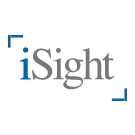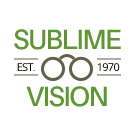Sports Vision Therapy Enhances Athletic Performance

Our Sports Vision Assessments are always specific to your sport as the visual demands of one sport are not always the same as another. Dr. Haleo will assess your unique visual system and identify areas of relative strength and relative weakness. He will then formulate and customize an individualized athletic vision training program, recommend and prescribe proper eye wear, contact lenses and nutraceuticals, designed to help you develop peak visual skills regardless of your ability level.
Vision plays a central role in every sport. Whether tracking a moving ball, spotting an opening to pass a ball or reading the contours of the green, athletes are required to use several aspects of the visual system at a very high level. There is much more to vision than just seeing clearly. Your vision is composed of many interrelated visual skills that can affect how well you play your sport. Some of the visual skills involved with athletic performance include:
Visual Skills: Training visual skills enables athletes of all ability levels to more quickly and accurately recognize and process visual information. This is the first step in preparing the body to make the proper response during competition.
-
Eye focusing skills: The strength, flexibility and accuracy of the eye focusing system should be evaluated with your sport in mind. Accommodative skills allow you to keep objects such as the ball, puck, or opposing team in focus as well as quickly change focus during the game.
-
Depth Perception (3D): Often called “3D vision”, depth perception is dependent on the ability to use both eyes together at the highest level. Deficiencies in depth perception can result in poor passes, shots, or spatial judgment during competition.
-
Eye Movements: The quality of your eye movements is related to the neural connections to the brain as well as the integrity of the eye muscles themselves. Eye movements must be fast, accurate and coordinated any time you need to quickly change focus from one object to another. It is much faster to move your eyes than just your head; deficiencies in eye movements can slow down your entire game.
-
Eye Dominance & Ocular Posture: Ocular posture and eye dominance of the two eyes is evaluated to determine the presence or absence of even a slight eye turn from the straight ahead position. Eye position is also related to how hard you must work to coordinate your eyes. Depth perception, fusion, ocular motility, vergence, and visual acuity are all affected by ocular posture.
-
Eye teaming: The strength and flexibility of the eye teaming system should be evaluated. Deficits in eye teaming (vergence skills) will result in split second double vision, eyestrain, fatigue, headaches, or dizziness. Deficiencies of the vergence system will affect sports performance either globally or during specific aspects of your game. Binocular Fusion is the ability to use both eyes together. When an individual has a fusion deficit, the will either see double or the brain will adapt and suppress (or ignore) one of the eyes. This can happen in split seconds changing when or where you see things. Binocular deficits can result in inconsistent performance or difficulties with specific aspects of your game.
-
Visual Acuity (Clarity): How clearly you see is the foundation of a strong binocular vision system. If you do not see equally out of each eye it has the potential to affect eye teaming. 20/20 vision is adequate for most daily activities, however it may still be too blurry for athletic competition. The average visual acuity of professional athletes is better than 20/20, so if your eye doctor has corrected you to 20/20 it may not be enough for your competitive events.
Perceptual Skills: Physically, the difference between a high performing athlete in a particular sport versus an average performing athlete in the same sport is marginal. Mentally, the difference in tremendous. The following perceptual skills should be evaluated during your binocular vision assessment:
-
Processing Speed: This is a measure of how quickly you process visual information. Deficiencies in processing speed will result in delayed reaction time.
-
Dynamic-Reactive: A sport that requires a dynamic-reactive component requires an athlete to quickly respond to a moving object.
-
Spatial Awareness/Planning: This perceptual skill allows athletes to know where they are on the field and where their teammates and opponents are in reference to them. The athlete can then make the best decision of where to play the puck; which pass to make; or which shot to take.
-
Visual Integration: The integration of visual information with the other senses is critical. Making sense of your world relies on all of the senses working harmoniously. The integration of visual and motor skills is important during athletic competition.
-
Visual Perception: This group of skills includes visual discrimination (determining likeness), spatial relations (determining differences), form constancy (determining sameness even when changed in size or orientation), visual memory, visual sequential memory, figure-ground (extracting valuable information from the background), and visual closure (ability to put the pieces together to form the whole). These perceptual skills are essential for athletic success.
-
Working Memory: This perceptual skill is critical for athletic success whether it is remembering a pitcher’s tendencies, which routes to run as a wide receiver, or remembering how a hole in golf plays. Working memory is a part of most athletic events.
Golf
Visual Attention: Visual attention can either be central, peripheral, or divided. For golf, the visual demand is central. Nearly 100% of a golfer’s attention is dedicated to the ball once a swing is started.
-
Duration: The visual demands of a sport can either be short duration or sustained. A swing in golf is a short duration of very high visual demand, however playing 18 holes places a sustained demand on the visual system. An athlete with poor visual endurance may perform better in the earlier parts of competition as compared to the final holes.
-
Directional Localization: This skill is used when determining the direction and speed of a moving object. During golf you are swinging at a stationary object, meaning the directional localization demands are high when you need to concentrate your eyes in one place but picture where the hole is in reference to the ball.
-
Athlete Movement: An athlete can either be in motion or relatively stable during competition. Although a golfer moves through their swing, they head is relatively stationary leading up to the striking of the ball. Visual fixations must be steady for the head to stay relatively still.
-
Target Demand: The target during competition can either be static (stationary) or dynamic (in motion). Stationary targets present vision information in a constant manner and require a high level of stability within the visual system.
-
Target Size: The target (golf ball) is small. The area of the golf club is a small area on a club that will produce a successful hit. Even the hole is small. This requires very fine tuned interpretation of visual information.
-
Visual Distance: This is the distance of the target which is providing the visual demand during competition. For golf, the primary visual distance is at the end of the club, however a player must also used distance judgments when judging a shot. When putting, the visual distance is the distance between the ball and the hole, as a successful putt requires judgement of distance and changes in the terrain.
-
Gaze Angle: This refers to the direction you must look during a given activity. Depending on the stance of the player, the ball is generally viewed in primary gaze (straight ahead) to slightly to one side (during the swing). The demand in the vertical direction is shifted into inferior gaze as the ball strikes the club below eye level.
-
Boundaries: The visual boundaries of a sport refers to the visual area that an athlete must attend to while competing. In many cases the visual boundaries coincide with the boundaries of the playing surface. During the act of hitting a golf ball the visual boundaries are restricted to a narrow area in front of the player.
-
Contrast / Figure-Ground: Contrast sensitivity, or the ability to distinguish between different shades of the same color, is very important during competition. Figure-ground, or the ability to identify an object of importance from background clutter, is also important. These demands are very high during golf, whether it is seeing the ball after it is hit, or reading the green before a putt.






